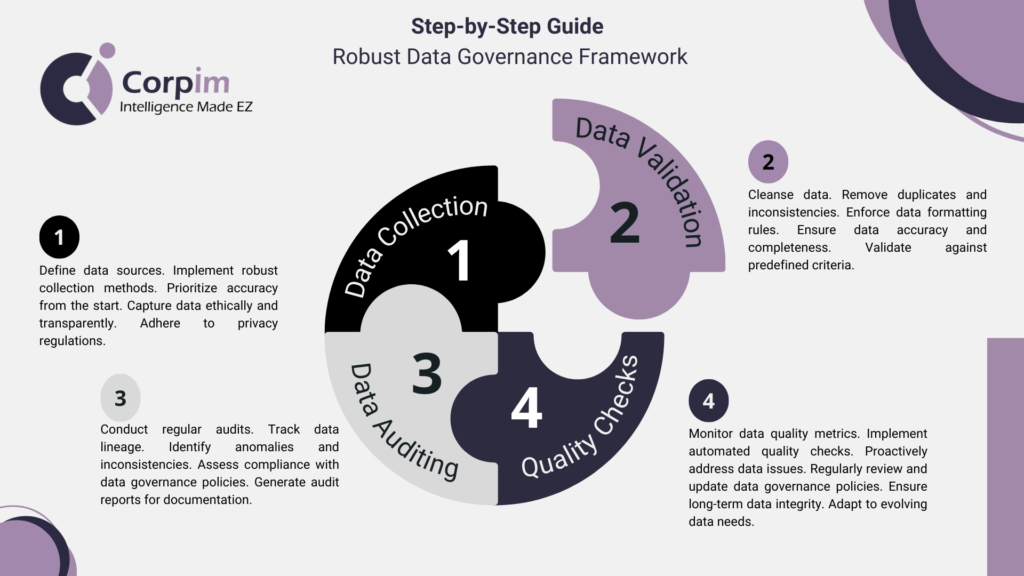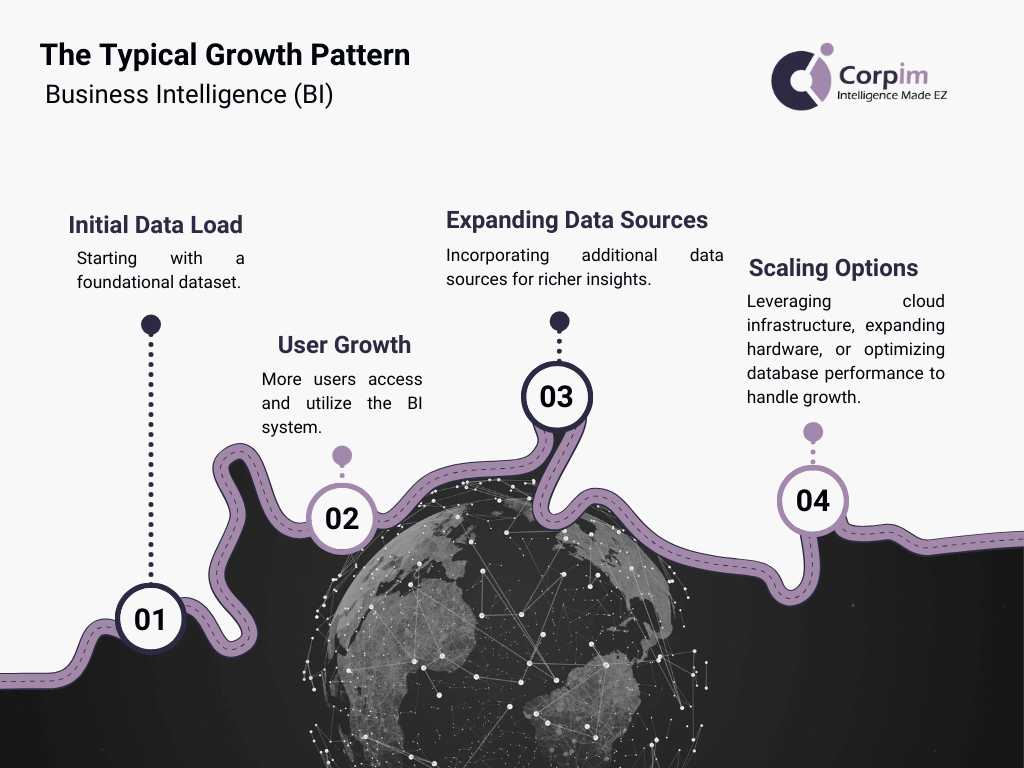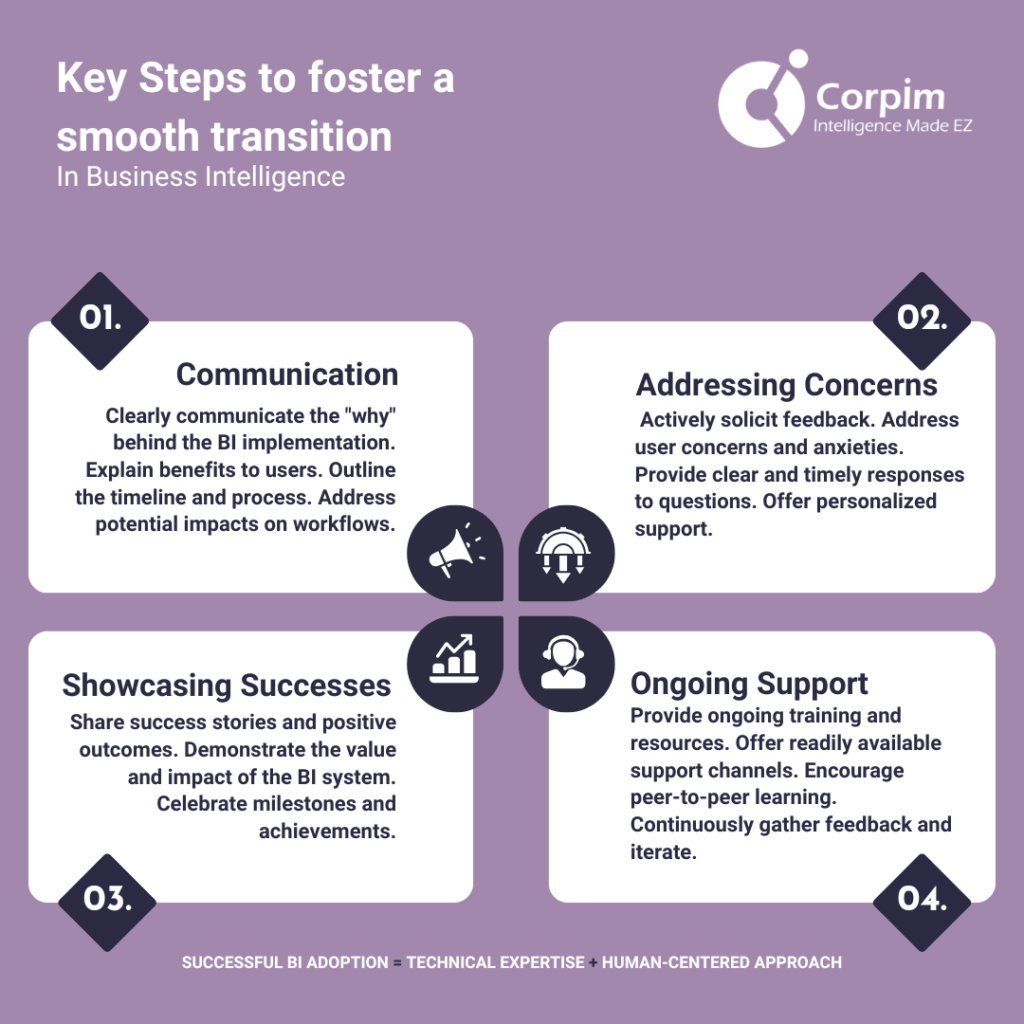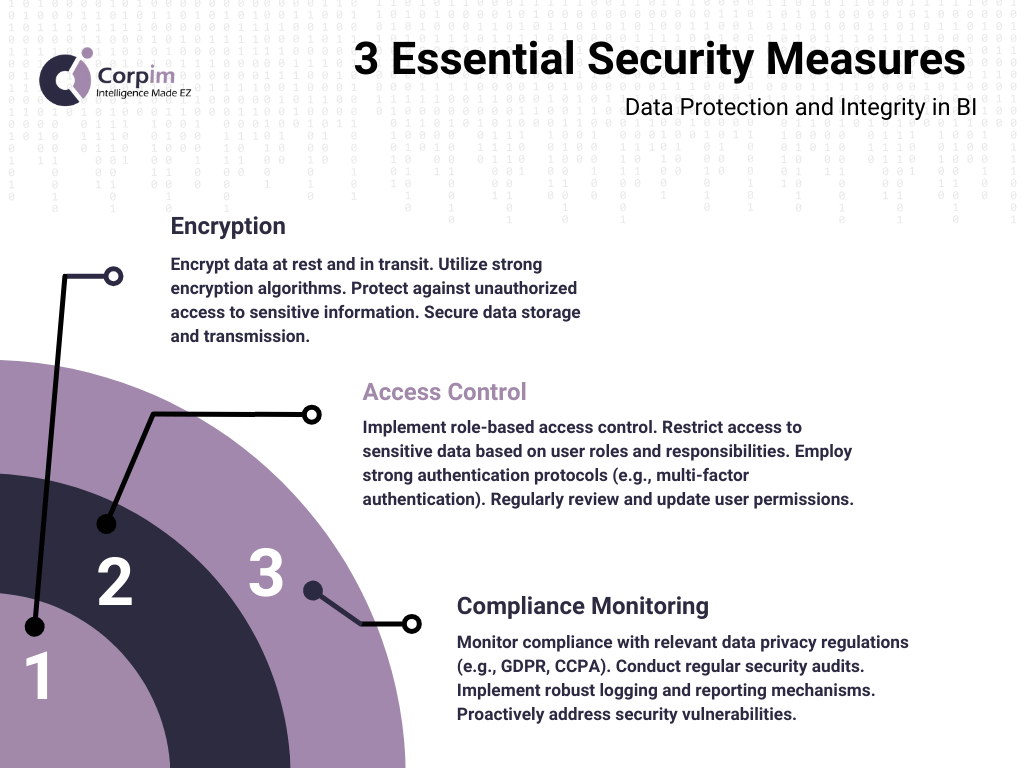Business Intelligence (BI) implementation presents both opportunities and challenges for organizations seeking to harness their data’s full potential.
While BI tools offer powerful capabilities for data-driven decision-making, the implementation process often contains hidden pitfalls. Understanding these common mistakes can help organizations navigate their BI journey more effectively.
1. Unclear Business Objectives
Organizations often begin BI implementations without well-defined business goals, focusing on technical features rather than strategic outcomes. This misalignment leads to unused capabilities and missed opportunities.
Start with a strategic planning phase. Document specific, measurable objectives that align with your business strategy. Work with stakeholders across departments to identify key performance indicators and create a prioritized roadmap for implementation.
So, to recap this section, here are the solutions for unclear business objectives when implementing BI:
- Always Start with a strategic planning phase to clearly define and document specific, measurable objectives.
- Engage stakeholders across departments to identify and align key performance indicators.
- Develop a prioritized roadmap to make sure all efforts contribute to overarching business goals.
2. Insufficient Data Quality Management
Poor data quality undermines BI effectiveness and user confidence. Without proper data governance, organizations risk making decisions based on unreliable information.
Build a strong data governance framework before implementation. Create clear data quality standards, implement validation processes, and establish regular data auditing procedures. Assign data stewards to maintain ongoing quality control.
To conclude on this section, here are the solutions:
- Build a strong data governance framework before implementation.
- Create clear data quality standards and implement validation processes to ensure accuracy.
- Establish regular data auditing procedures and assign data stewards to maintain ongoing quality control.

3. Limited User Training
Many organizations underinvest in training, leading to low adoption rates and reduced ROI. Users need proper guidance to leverage BI tools effectively.
Design a comprehensive training program that addresses different user skill levels and roles. Offer multiple learning formats, including hands-on workshops, documentation, and video tutorials. Create a support network of power users to assist colleagues.
To recap, here are the solutions:
- Design a comprehensive training program that addresses different user skill levels and roles.
- Offer multiple learning formats, including hands-on workshops, documentation, and video tutorials.
- Create a support network of power users to assist colleagues.
4. Inadequate Scalability Planning
Short-term thinking about scalability requirements can restrict future growth. Organizations must consider both current needs and future expansion.
Select platforms with robust scaling capabilities. Consider factors such as user growth, data volume increases, and potential new data sources. Evaluate cloud-based solutions for flexible scaling options.

To fully address inadequate scalability planning when BI implementation for a business, here are some solutions:
- Select platforms with robust scaling capabilities.
- Consider factors such as user growth, data volume increases, and potential new data sources.
- Evaluate cloud-based solutions for flexible scaling options.
5. Departmental Silos
Implementing BI solutions in isolation creates fragmented data views and reduces organizational effectiveness. Different departments need unified data perspectives for better decision-making.
Create cross-functional implementation teams. Develop integrated data models that span departmental boundaries. Establish data-sharing protocols that promote collaboration while maintaining security.
To break down department silos, here are some proposed solutions:
- Create cross-functional implementation teams.
- Develop integrated data models that span departmental boundaries.
- Establish data-sharing protocols that promote collaboration while maintaining security.
6. Weak Change Management
Technical excellence alone cannot guarantee successful adoption. Organizations must address the human aspects of implementing new systems.
Develop a structured change management approach. Communicate benefits clearly, address concerns proactively, and showcase early successes. Provide ongoing support during the transition period.
To emphasize practical solutions, consider the following:
- Develop a structured change management approach.
- Communicate benefits clearly, address concerns proactively, and showcase early successes.
- Provide ongoing support during the transition period.

7. Overly Complex Interfaces
Complex, cluttered interfaces discourage user engagement. Simplicity and intuitive design drive adoption and user satisfaction.
Focus on user-centered design principles. Create clean, purposeful interfaces that align with user workflows. Regularly collect user feedback and refine designs based on actual usage patterns.
To summarize this section, here are the actionable steps:
- Focus on user-centered design principles.
- Create clean, purposeful interfaces that align with user workflows.
- Regularly collect user feedback and refine designs based on actual usage patterns.
8. Inadequate Security Measures
Security oversights can expose sensitive business data. Organizations must balance accessibility with robust protection.
Implement comprehensive security controls from the start. Use role-based access management, data encryption, and regular security audits. Stay compliant with relevant data protection regulations.
For a robust approach to security measures, consider these solutions:
- Implement comprehensive security controls from the start.
- Use role-based access management, data encryption, and regular security audits.
- Stay compliant with relevant data protection regulations.

9. Limited Mobile Capabilities
Modern business requires mobile access to insights. Desktop-only solutions limit effectiveness in today’s mobile work environment.
Choose solutions with strong mobile capabilities. Optimize dashboards for various devices and screen sizes. Consider offline access requirements for field operations.
To guarantee adaptability, here are the solutions:
- Choose solutions with strong mobile capabilities.
- Optimize dashboards for various devices and screen sizes.
- Consider offline access requirements for field operations.
10. Poor Performance Monitoring
Without proper monitoring, organizations struggle to maintain system effectiveness and user satisfaction.
Establish clear performance metrics. Monitor system health, user adoption rates, and data processing efficiency. Conduct regular assessments to identify improvement opportunities.
To round off this section, here are the solutions:
- Establish clear performance metrics.
- Monitor system health, user adoption rates, and data processing efficiency.
- Conduct regular assessments to identify improvement opportunities.
How To BI Implementation Successfully?
BI implementation requires careful planning, strong governance, and continuous improvement. By avoiding these common mistakes, organizations can maximize their BI investment and achieve better business outcomes.
Corpim offers comprehensive implementation support to organizations seeking expert guidance in their BI initiatives.
Our expertise in DataTech and cloud computing helps organizations transform complex data landscapes into actionable insights. With experience serving both Fortune 500 companies and growing startups, we deliver scalable solutions tailored to each organization’s unique needs.
Contact our team to discuss how we can help optimize your BI implementation journey and achieve your data-driven objectives.













